Fairness First Blog
Researchers’ voices in health equity
The Fairness First blog represents a space where researchers share with the broader community why health equity research matters to them, how do they connect to health equity, and what is the value of community engagement in the research process.
February 20, 2025
Anthropology and Public Health: Levers for Change
A Conversation with CHER’s Mark Remiker and Kelly Laurila
This month we’re celebrating Anthropology Day and sharing stories from Mark Remiker and Kelly Laurila about how they use their backgrounds in anthropology in their public health work. Anthropologists study humanity – past and present – and look at human behavior, culture, society, language, and biology. Anthropologists use their diverse skill sets to bring critical insights into human health and contribute to public health efforts.
About the Researchers
Kelly Laurila, MA and Mark Remiker, MA are research scientists with the Center for Community Health and Engaged Research (CHER). Mark works with SHERC’s Community Engagement Core and is currently co-leading a collective impact project* in Yavapai County that focuses on children’s health system change. Kelly serves as the lead evaluator for SHERC as well as the Partnership for Native American Cancer Prevention, the Center for Native American Cancer Health Equity, and the Bridges to Baccalaureate Program. Mark and Kelly are part of the NAU Health Planning Team. The team is developing a college of medicine at NAU that will focus on developing the primary care workforce in rural Arizona. Kelly grew up in Dallas, Pennsylvania and came to Arizona in 2002. Mark is originally from Madison, Wisconsin and came to Flagstaff after living and working in Oregon.
*Collective impact: A collaborative approach that brings together people from different sectors and backgrounds to work towards a common goal.
Why Anthropology?
MARK: I was lucky enough to be involved in research as an undergraduate. I majored in psychology and after a couple of projects I started seeing the same folks coming in to be research participants. This is a phenomenon known as the college sophomore problem and it’s problematic because it leads researchers to rely too heavily on undergraduates. This limits the generalizability of findings because it only accounts for the perspectives of one group of people. As a student, this was eye-opening. Luckily, I had a fantastic advisor who suggested that I look into anthropology programs for my graduate work. Anthropologists are interested in variations in groups of people so this approach fit what I was looking for. I took my advisor’s advice and went to Washington State University to study evolutionary anthropology.
One of the other exciting things about anthropology was the prospect of doing field work and traveling around the world. This was another thing that drew me to anthropology when I was younger, in addition to working with a wider range of people.
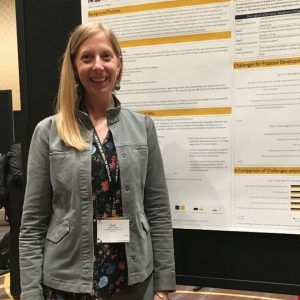
KELLY: I started my undergraduate degree as an anthropology and art major. I really liked the professors in my undergrad. They were probably the only professors who I could go to during office hours and really learn about their work. I also had my daughter as an undergraduate. I was a single parent and had moved to Arizona at the time. When I had my daughter, I changed my major from anthropology to elementary education because it seemed more sensible. I had transferred to NAU from Arizona State University and was one semester away from graduating with a bachelor’s degree in elementary education when I took Dr. Miguel Vasquez’s People of the World class. After going to the first class, I immediately changed my major back to anthropology. It was a tough decision because I was almost done with the elementary education degree, but I haven’t looked back since. I eventually went on to graduate school at NAU to get a master’s degree in anthropology.
I really love anthropology because it helps you think about things from another perspective. What really brings me joy is being able to spark changes to systems by understanding cultural systems*. The cultural systems we’re working in are higher education systems. There’s so much to learn from understanding how people collaborate, mentor, and conduct research within these social structures.
*Cultural systems: The collection of values, beliefs, and practices of a group of people. Cultural systems change over time and are shaped by the people in the group.
Being a Conduit for Change
Kelly and Mark discuss how they came to work in health research and the importance of doing work that benefits people.
KELLY: I was always curious and interested in health, including animal health. As a kid, I wanted to be a veterinarian. I rode horses at a local stable and I used to drive the veterinarian nuts with questions. Additionally, my mom was a nurse and she worked in healthcare for her whole career, eventually transitioning into hospital administration. I think that influenced my life and interests in a big way.
When I was an undergraduate student becoming interested in anthropology, the work of the late Dr. Paul Farmer sparked my love for medical anthropology and really opened my eyes to health disparities. I had never read anything that so clearly described the realities of health inequities. Moving into graduate school, it was really my social capital* – my personal relationships – that brought me to this work. My connections led me to Flagstaff Medical Center where I worked with Dr. Cindy Becket who was the Director of Professional Practice and Research and the Director of Pediatric and Perinatal Services. My internship and thesis looked at provider social networks and resources for pregnant women with substance use issues in the Flagstaff community. That really opened the doors to a series of opportunities and brought me to where I am today.
*Social capital: A concept used in the social sciences to describe the value of interpersonal relationships and how these relationships can benefit individuals and groups.
Additionally, I really need to be a conduit for change. I don’t like thinking about things theoretically without taking action to help people. All of the projects that I’ve worked on for the past nineteen years have been centered on advancing workforce capacity for underrepresented folks – particularly Native Americans – and addressing health disparities. I like projects that enable me to use my skills and expertise as an anthropologist and evaluator to be a lever for change.
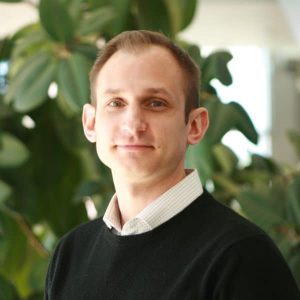
MARK: Looking back, my first exposure to the idea of health disparities was when I was in graduate school. We were using a statistical measure known as the Gini coefficient to look at the distribution of wealth and other resources within a group or community. Using this approach, a score of zero reflects perfect equality; all resources are distributed equally. Conversely, a score of one reflects maximum inequality; a single person has all of the income or resources. This concept was really fascinating to me.
After graduate school, I worked with rural clinics across the state of Oregon and saw first-hand the variation in the availability of medical resources across communities. At the same time, I was reading a book called The Impact of Inequality. Written by Richard Wilkinson, the book illustrates how inequality is a driver of poor health, social conflict, and violence, and how social and political equality are essential for improving life for everybody. All of these experiences piqued my interest in addressing health disparities in my career. Like Kelly, I felt like I needed to be more involved in creating change.
Anthropological Insights on Health and Addressing Health Disparities
MARK: Being trained in anthropology helped me to appreciate the differences in the human experience and gave me the awareness that culture plays a huge role in human behavior and health behaviors. All human behavior is culturally informed so understanding how cultural processes influence health and human behavior is critically important. About 10 years ago, NIH released a report called The Cultural Framework for Health. This publication presents a multi-disciplinary effort to identify the methods required to define culture and how it functions to influence health in different groups of people. Anyone interested in incorporating cultural elements into their health research should check it out. There’s an accompanying article titled Culture: The missing link in health research. I think it’s critical that we are incorporating these ideas around culture into studies of public health and health services research.
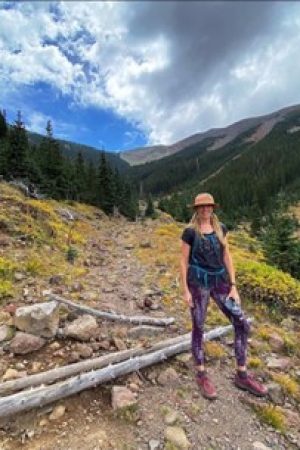
KELLY: We live in a complex world and that complexity really requires multi-disciplinary solutions. There are multiple studies (learn more in this piece from Nature) that suggest that a diversified team brings more impactful research. This can include people from different scientific disciplines, lived experiences, career levels, racial and ethnic backgrounds, etc. When we’re talking about scientific advancement and finding solutions to reduce health disparities, that multidisciplinary approach is critical. Anthropology brings a critical perspective to how we bring folks from different backgrounds together, and how people can come together to generate creative solutions for building healthier communities. This work is incredibly important.
Using Anthropological Skills and Methods in Public Health
Translating Anthropology to Public Health and Evaluation
Relationship building and the ability to consider multiple perspectives are key skills for anthropologists. They’re also crucial skills for engaging in community based health research and partnerships.
MARK: My background in anthropology translates really well to public health and health services research. In addition to emphasizing the importance of building relationships with the community that you’re working with, one of the most valuable things that I got from my anthropology training was exposure to a broad array of both quantitative and qualitative methods. From examining the impacts of environmental contaminants, to evaluating the use of a mobile app for social isolation, having a large methodological toolbox allows me to be nimble and take on projects across a variety of settings, disciplines, and departments.
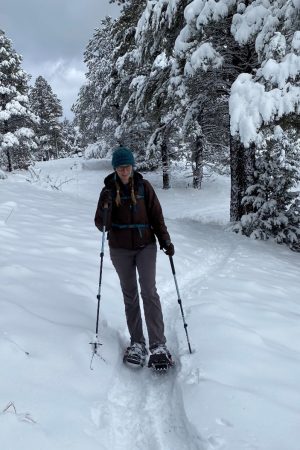
KELLY: I think about my work as being situated at the intersection of ethnography* and data driven decision making. I see myself as an applied and practicing anthropologist who works in evaluation in the context of higher education. The projects I serve on are positioned to generate institutional and organizational change. Similarly to Mark, I work with a wide group of people including community experts, healthcare providers, institutional leadership, environmental scientists, public health professionals, engineers, and planetary scientists.
*Ethnography: A key method of anthropology, ethnography involves observing a group of people to study their culture. Ethnographers immerse themselves in a community to understand their way of life.
My background in anthropology influences my approach to evaluation quite a bit, plus at the center of it, evaluation is a people business. I’m able to consider multiple cultural perspectives, including the varied cultural systems you find at different higher education institutions. Because anthropology teaches you how to consider different perspectives, I’m able to bring the values and priorities of the people I’m working with into my projects and inform project design, decisions, and implementation.
Anthropological Methods and Perspectives
Anthropologists use a wide range of methods to understand how humans socialize, work, play, and live. Here, Kelly and Mark discuss projects where they’re drawing directly from anthropological methods and perspectives.
KELLY: The Partnership for Native American Cancer Prevention (NACP) – which focuses on reducing cancer disparities among Native Americans in the Southwest – was just refunded for another five years and one of the innovations of this renewal is the focus on the concept of Two-Eyed Seeing. Two-Eyed Seeing honors Indigenous and Western perspectives and weaves these two worldviews together to benefit all. This guiding principle involves identifying the strengths of Indigenous worldviews and ways of knowing and the strengths of Western worldviews and ways of knowing and learning how to use these two viewpoints together to complement each other (read about Two-Eyed Seeing here or watch this video). My team is responsible for evaluating all aspects of the NACP partnership, including the implementation of Two-Eyed Seeing within the program.
In the past, we’ve implemented “partnership health” assessments with NACP. Connecting back to anthropology, this work with NACP builds on research done by my mentor, anthropologist Dr. Robert T. Trotter, II. While working with General Motors, Trotter and several other anthropologists looked at how members of collaborative research labs worked together to understand the factors that influenced their success. They looked at organizational culture including concepts like trust, conflict, and collaboration. In order for our team to successfully do Two-Eyed Seeing, there needs to be a foundation of trust and respect among Native American and non-Native team members. We’re building on this partnership health work with metrics focused on belonging to build that foundation.
Another example of bringing anthropological thinking into my day-to-day work is a project that uses a technique from anthropology/sociology known as social network analysis. CHER’s Dr. Julie A. Baldwin and Dr. Heidi A. Wayment and I have used this approach to analyze SHERC’s publication records to understand the impact of SHERC’s programming. By looking at the changes in social networks that are illustrated by the publication records, we can see how SHERC’s programming can drive interdisciplinary research and address needs identified by communities. This demonstrated ability to build capacity has direct implications for universities that are seeking ways to advance workforce development while increasing scientific and community impact (read Laurila’s published work: Support of Underrepresented and Early-Stage Faculty at a Research Center for Minority Institutions).
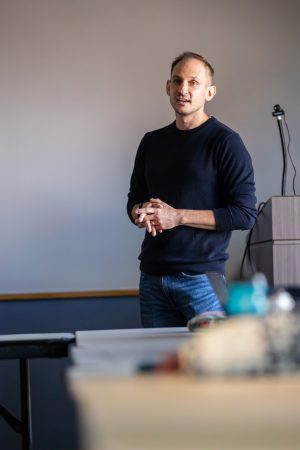
MARK: I’m currently working on a project that uses a theory and method that was developed by anthropologists in the 1980s, called consensus analysis. This approach helps us to understand how a group of people think about a topic and how much their conceptualizations vary. For this project, we’re looking at how people think about and understand the components of a healthy community. Consensus analysis will help us answer questions like, how much do people agree on what makes a healthy community?
We’re using this technique to understand variation in health priorities across Arizona as they relate to social determinants of health*. Our longer-term goal is to use the findings from this project to guide SHERC’s work and pursue research that needs to be done to address community priorities. This work is a really good example of how we are adopting a method that came from anthropology to use in public health.
*Social determinants of health: Non-medical factors – like socioeconomic status, education access, living location – in a person’s environment that influence health.
Be Curious!
MARK: If you have the opportunity, take an anthropology class. It’s so useful. I didn’t fully understand just how valuable education in anthropology can be until I was actually in the workforce and realized all of the benefits that came from my training.
KELLY: It’s crucial to keep your curiosity fresh and your mind open to other ways of knowing and being. Keep that anthropological lens in focus.
Reach out!
Kelly Laurila: kelly.laurila@nau.edu
Mark Remiker: mark.remiker@nau.edu
Interested in learning more about health equity partnerships and research?
Visit CHER’s social media for short stories that highlight SHERC researchers, students, lab spaces, and more! Look for “Fit it in a Minute” posts.